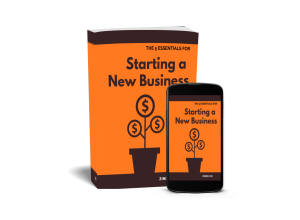As an entrepreneur, one of the most important things you can do is create a strong brand.
Your brand is what sets you apart from your competitors and tells customers who you are and what you stand for.
A strong brand story can help you do that.
But what makes a good brand story?
In this blog post, we’ll share 10 strategies for creating a brand story that will engage your audience and help you build a successful business. Stay tuned!
What is Brand Storytelling?
Brand storytelling shares:
- How your company or brand came to be
- What motivates you and your team to get up in the morning and come to work every day
- What types of customers find value
- A transparent view of the people behind the company
- While it may seem subtle, telling your brand’s story is a relationship-building tool
- It is a direct concept that underscores your entire web presence, something that your entire team, no matter what organizational level, embraces
What brand storytelling is NOT:
- It is not a boring writing assignment nor is it a long essay of what your company or brand is about
- A blog post
- Something that you should hide
- A glimpse into your company
- Something reserved for your marketing team
- It is not a PR stunt or a viral video to manipulate your customers and prospects
- It is not boring nor does it have to be an artsy
Contrary to popular belief, storytelling is not for your company (although it may also serve as an inspiration to you and your employees).
It’s about your customers and the value they will get from engaging with your brand or service.
The most powerful stories are the ones that put the customers as the star and your company as a supporting character.
Don’t overthink this process, storytelling is something that we naturally do, though some may do it unconsciously.
Your story doesn’t need to be perfect as it may evolve from time to time.
Now that we’ve explained what your brand story can and shouldn’t be….let’s talk about the steps and tips on how to create it:
A Story Doesn’t Have to Start With “Once Upon a Time”…
No, no. Your brand’s story doesn’t need to start with fancy words or magical places.
Be it your parents’ garage or a rundown apartment, tell your story how it is.
The more your story feels human, the more your customers feel that they can connect with you on a personal level.
Let Your Customers Do the Talking:
The truth is, online content can be difficult to write, some get lost in translation while others lose their human touch and thus creating a distance among your customers.
Sometimes, brand owners are at a loss for words to describe what it is they do and why you matter to their customers.
If you do get tongue-tied in telling your story, why not let your customers tell your story?
That’s what Clarity did, they let their customers do the talking for them and they recently launched a series of stories from actual customers.
There are tons of great stories out there on how many businesses got started. Remember…we are telling a story…not creating a factual timeline.
Forget about Marketing
Although this may sound contradictory, a brand story is not marketing material or a sales pitch, nor are the ads.
As Susan Gunelius had said, brand stories should be told with the brand persona and the writer’s personality on center stage.
However, whatever you do, don’t be boring! Boring stories won’t attract or retain customers.
Be Conversational
Authenticity is crucial in your business, not just in copywriting.
Don’t be too formal or on guard as you’ll lose the trust of your audience.
Stay away from awkward stock photos, created fake customers with false promises and empty messages.
Be Human
When writing your brand story, pretend that you’re talking to a new friend over tea and scones and not giving a lecture in a university back in the 1800s.
Talking down or not showing respect to your prospects will stop them from listening to you any further.
Also, when drafting your brand story, don’t stress over grammar (you can always hire a copywriter or grammarian to check on that later).
There is no need for a certain amount of characters for your story either – just write what you feel.
However, your story should not be too long or unwieldy as it may cause your readers to become bored or distracted.
Craft Your Message Accordingly
As mentioned earlier, your brand story doesn’t have to be all that flashy… it’s the “how” that matters.
Take a lesson from Pinterest’s lead content strategist Tiffani Jones Brown and how her five-person team is responsible for the voice, tone, user interface, and many other things for their Company.
Your brand story’s architecture is far from coincidental, don’t expect it to just appear out of thin air. Focus on getting your messaging right.
Take a look at this example from GoPro.
Unify your Online and Offline Presence
Remember if you are true and transparent you never have to remember what story you told who.
Audra Carpenter
Your brand’s online presence, story, message architecture, and brand identity should also follow you and your employees offline.
Anything from blog posts, press releases, and even social media updates.
You need to keep your brand’s identity unified and consistent as much as possible.
As we mentioned earlier, the image you share with the world should be a genuine, authentic, and transparent view of your organization.
Choose Your Words Wisely
What you say is as important as how you say it.
Make sure you’re using the right tone, voice, and communication style that reflects your brand’s personality that your customers value most.
If you’re speaking to an audience of millennials, take note that a casual tone in conversation and style is preferred, while older generations prefer a more formal tone and style.
Make Your Story Personal and Focus on the Human Element
Don’t be afraid to mention your failures and problems (no one reached the top instantly).
By doing so, you are showing that there are indeed people behind your brand and they will be able to find a more ‘connectable’ persona behind the products they love to consume.
Read more on how you can learn from Warren Buffet.
And Lastly, Keep Your Story Clear and Consistent
The best stories, including brand stories, are those that are simple and straightforward.
While it’s important to keep up with the times, your audience can easily lose interest in your brand if you keep changing your story or if your story is too difficult to comprehend.
You can’t create a strong brand if you’re trying to be everything to everyone.
Learn more here from the folks over at KissMetrics.
Got a good brand story you’d like to share!? We’d love to hear it!









